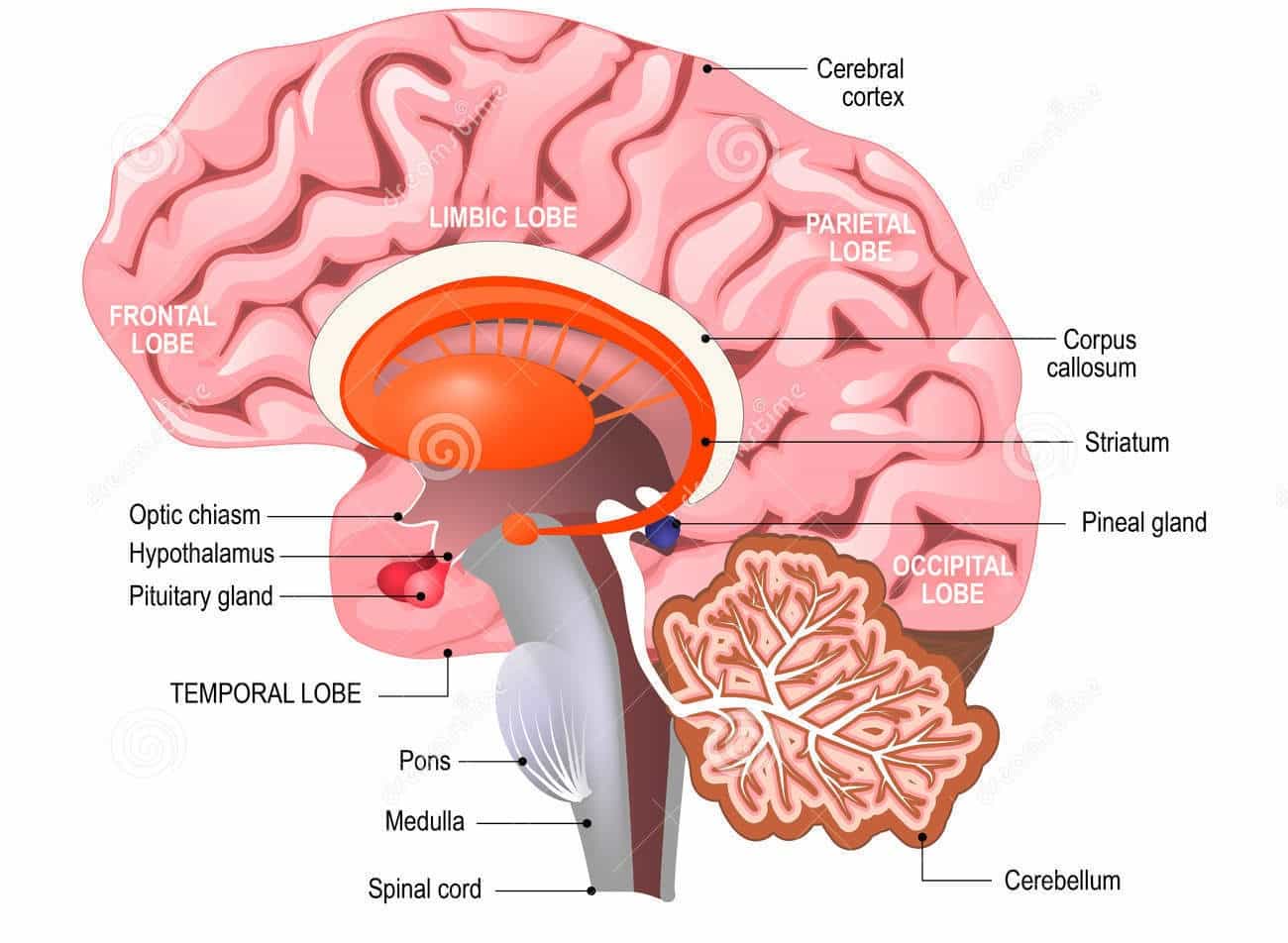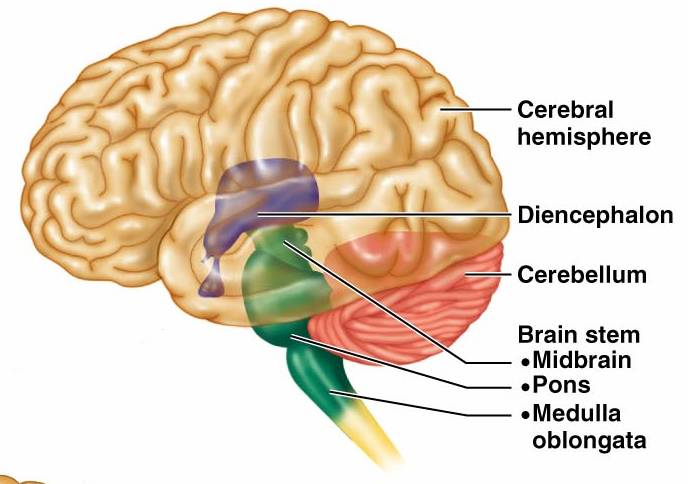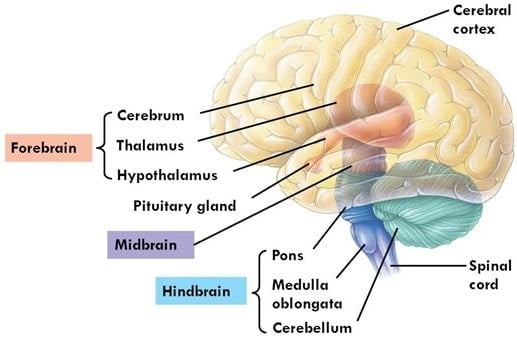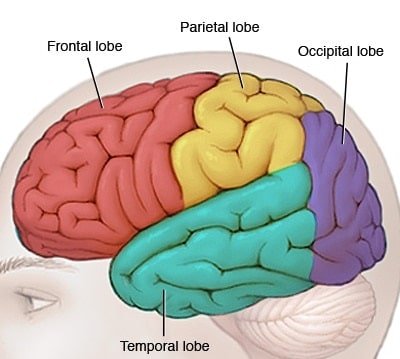Your brainpower determines your creative power in times of emergency. The last time you were under pressure to deliver a task, what did you do?
We are often ignorant of the creative power of our brain. The brain has an enormous capacity to handle anything. Our understanding of how it functions will distinguish us from others.
Do you accomplish all your daily tasks? Have you thought of why you couldn’t in most cases?
Many people could accomplish only 40% – 80% of their daily tasks. This is not because of incapacitation, but because of congestion in the brain.
What is the Brain?
The brain is the center of thought, creativity, and intelligence. Many times, we allow issues of life to congest our thoughts and brainpower thereby causing us to lose.
Scientifically, it has been stated that people use only 10% of their brainpower on daily basis.
According to Robynne Boyd out of the brain cells, only 10% are neurons. The remaining 90% are glial cells that encapsulate and support neurons.
This could be the mystery behind our daily usage of 10% of our brainpower. According to Brian Tracy,
our lives are jam-packed these days with worries, to-do lists, thoughts about work and home. And this clutter gave the brain no room for focus and creativity.
Brian Tracy: Try Decluttering Your Brain to Find More Room for Creativity (Video)
I tried to capture the above statement in the diagram below.

Let us consider this analogy:
If a machine has the capacity to produce 100 units per day. Won’t it be a colossal waste and mark of organizational inefficiency to produce at 20 units per day?
Indeed, it will be. This will not only ruin the profitability of any organization but will undermine its future well-being.
Why should people waste such an enormous amount of brainpower and still strive for success?
One reason could be ignorance of the creative power of the human brain. This article has come to the rescue. You will understand:
- The creative power of the brain, and
- how to exploit the brainpower for maximum benefit.
What is Brainpower?
Brainpower is one’s ability to think out results or solutions at any given point in time. It is one’s intellectual ability and capacity to find solutions to a problem without external interference.
Brainpower could also be referred to as creative power. Because it exposes one’s intellect and creativity from the inside out.
Brainpower is a function of time. It is your creative power measured within a time frame. To determine your brainpower, you should answer questions like:
- How long did it take to arrive at a solution to the problem?
- Was the solution perfect and fitting to the problem?
To become creative, there is a need to exercise and develop our brainpower. This creative power should not die before us.
The Functional Power of the Brain
The Human brain governs the body system. It is the center of intelligence, creativity, emotions, memory, and thoughts. It connects the human body with the outside world.
The Human brain weighs about 1.4kg or 3 pounds and uses 20% of the body’s energy. It is comprised primarily of the cerebrum, cerebellum, and brainstem.
During embryonic development, the human brain is divided into three sections, namely the forebrain, the midbrain, and the hindbrain.
The forebrain is comprised of the cerebrum, thalamus, hypothalamus, pineal gland, and other underlying structures. The midbrain is located near the center of the brain and is part of the brainstem. The hindbrain is made up of the cerebellum and the brainstem.
Brainstem
The brainstem is made up of the medulla oblongata, the pons, and the midbrain. It is a relay center that connects the cerebrum and the cerebellum to the spinal cord.
The medulla carries nerve signals up into the brain and down into the spinal cord. The medulla helps in processing involuntary actions that are related to homeostasis.
The medulla has a cardiovascular center. This center helps it to regulate the heart rates to ensure sufficient oxygen supply to the body tissues. Hence, it monitors blood pressure and oxygen levels.

The Human Brain (Credit: Shutterstock)
Also, the medulla has a medullary rhythmicity center which helps it to control the rate of breathing.
Breathing rate is usually influenced by bodily activities. Activities that use up energy speedily increase the rate of breathing. Finally, the medulla coordinates all reflex actions such as sneezing, vomiting, coughing, etc.
The pons acts as a bridge for nerve signals traveling to and from the cerebellum. It also carries nerve signals between the superior regions of the brain and the inferior regions of the brain.
Midbrain
The midbrain is the most superior component of the brainstem. It is divided into the tectum and the cerebral peduncles.
The tectum controls auditory and visual reflexes. That is, it controls reflex actions that deal with hearing and seeing.
The cerebral peduncles contain nerve tracts that connect the cerebrum, thalamus, and spinal cord. It also contains the substantia nigra which is in charge of movement and motor control. If this area of the brain is lost or deteriorates, it can lead to Parkinson’s disease.
Cerebellum
The cerebellum is inferior to the cerebrum and contains the cerebellar cortex and the arborvitae also called the tree of life. The arborvitae connects the cerebellar cortex to the other parts of the brain and body.
The main function of the cerebellum is movement and motor control. The cerebellum keeps the body system at balance by coordinating posture, walking, writing, speaking, and other complex muscle activities.

Cerebrum, cerebellum, brain stem (Credit: Human Brain Facts)
Forebrain
The forebrain is the most superior part of the brain. It contains the thalamus, hypothalamus, pineal gland, and cerebrum, among other components. This is the center of reasoning, emotions, learning, thinking, and all activities that affect creativity
The thalamus acts as a switchboard of the brain. Thalamus receives sensory neurons entering the brain and sends them to the correct portion of the cerebral cortex for processing. The thalamus is essential to learning.
The hypothalamus is not concerned with learning and reasoning. It is more concerned with the maintenance of a healthy body. It controls the body temperature, the rate of heartbeat, blood pressure, hunger, thirst, and the production of hormones.
All these work together to maintain a healthy body. Remember, health is wealth.
The pineal gland produces the hormone that controls sleep. The hormone secreted is called melatonin. Melatonin is believed to have a sedative effect on the brain, which helps to induce sleep.

Forebrain, mid-hindbrain (Credit: SlidePlayer)
Cerebrum
The cerebrum is the center of creativity, reasoning, and logic. It is the largest part of the human brain and is divided into two cerebral hemispheres. The right and the left cerebral hemispheres.
These two hemispheres are joined together by the corpus callosum. The corpus callosum helps to transmit messages between both parts of the brain.
Each hemisphere controls the opposite sides of the body. That is, the left brain controls all the muscles on the right-hand side of the body system. While the right brain controls all the muscles on the left side of the body system.
It is believed that one part of the cerebral hemisphere can be dominant. Hence, one can be either left-handed or right-handed. If you are left-handed, then your right brain is dominant and vice versa.
How to Use the Creative Power of the Brain
The cerebrum which is the center of creativity is divided into two halves: the right brain and the left brain.
Each of these halves is subdivided into four (4) lobes, namely:
- frontal lobe,
- parietal lobe,
- the temporal lobe, and
- occipital lobe.
The frontal lobe
The frontal lobe is associated with intelligence, emotions, reasoning, personality development, and behavioral formations. It also controls the sense of judgment, planning, and problem-solving. It has also been found to be associated with speech and expressive language, motor skills, and body movement.
Dopamine is a chemical messenger in the brain. It is usually released by the nerve cells to send a signal to other parts of the brain. When the chemical is released, it helps to control body movement, motivation, reward, memory, and attention.
Neuroscientist believed that different levels of dopamine affect motivation and enthusiasm in people.
Increased dopamine release boosts enthusiasm and motivation while decreasing the release of dopamine reduces enthusiasm and motivation. This feeling of motivation occurs when the dopamine released reaches a part of the brain called the nucleus accumbens.
The nucleus accumbens is an area in the forebrain responsible for the reward and reinforcement of behavior.
When dopamine reaches the nucleus accumbens, it makes a judgment based on environmental stimuli. This could be reward or punishment. It also enforces a behavioral pattern that suits the stimuli.
For example, if you are afraid of failing your exam, the dopamine released will motivate you to work harder. You will do all that is necessary to avoid failure.
The creative power of the brain is usually affected by the predominant stimuli.
How do you increase the dopamine level to trigger motivation and reinforce a good behavioral pattern?
According to Erica Julson, to increase the dopamine level do any of the following:
- eat lots of food that contains protein,
- eat fewer fatty foods,
- increase your consumption of probiotics,
- eat more velvet beans (mucuna pruriens),
- have regular exercises,
- always have enough sleep,
- listen to music,
- practice meditation,
- expose yourself to sunlight, and
- use iron, niacin, folate, and vitamin B6 supplements.
This shows that the dopamine level affects brainpower. Because the dopamine level affects the creative power of the brain:
- use your sense of judgment to prioritize your daily activities.
- to avoid anxiety, simpler activities should be performed first and the difficult ones performed last.
- ensure that worry does not take a minute out of your daily schedules,
- adopt good planning tactics, it will help you accomplish all activities.
The parietal lobe
The parietal lobe processes tangible sensory information. This includes the sense of touch, pain, and temperature. it also interprets signals from vision, hearing, and movement.

Frontal temp lobes (Credit: Mayoclinic)
The temporal lobe
The temporal lobe processes sound. It is associated with memory, hearing, language perception, and organization.
The occipital lobe
The occipital lobe interprets visual signals and information such as color, light movement, etc.
What we hear, read, or see effects the creative power of the brain. To be more productive each day,
you must be mindful of what you consume through your sight and ear. The senses of sight and hearing are too sensitive that they can make or break your day.
Creative Power of the Brain
From the foregoing, we understand that each part of the brain contains these four lobes. In the 1960s, Roger Wolcott Sperry performed experiments to show the functional differences between the right and left brain.
According to Sperry, the left-brain hemisphere is associated with the following:
- linear thinking,
- arithmetic,
- logic and facts,
- speech,
- comprehension, and writing.
The right-brain, on the other hand, controls:
- spatial ability,
- creativity,
- imagination,
- intuition,
- artistic and musical skills.

Right-left Brain (Credit: May Field Clinic)
Based on the finding, people who are left-brain dominant are good at reading, writing, arithmetic, and logical reasoning. And people with right-brain dominance are good at art, music, and other creative works.
From Sperry’s point of view, we can see that our conventional education supports the left brain more than the right-brain.
Also, we tend to reward the left brain more than the right brain. This is because we believe that they are smarter and tend to be more successful in society.
Why are most people left-brain dominant?
Jean-Baptiste Lamarck proposed the theory of use and disuse. This theory of evolution states that organs used constantly as a result of environmental needs are developed. He noted that these developed organs are transferred to the offspring through heredity.
If this theory is true, then it means that our conventional education is gradually killing creativity. Because it is developing more of the left-brain than the right-brain.
To maximize the creative power of the brain, we need to develop the right brain. When we fully develop the right brain, it will be transferred to our children through heredity. Could this be the reason most people are left-brain dominant?
Another theory that could be responsible for more left-brain dominance is the theory of reward and punishment.
This theory was developed by B.F. Skinner. It states that individual behavior is usually modified by its consequences.
In other words, when a behavior attracts reward, it is reinforced and becomes a dominant behavior. However, a behavior that attracts punishment is usually discontinued.
This tells us that reward and punishment will help us maximize the creative power of the brain.
How?
If we reward the left-brain dominant people more than the right-brain dominant individuals, then:
overtime, people will shift towards the left brain than developing their right brain. The same will be true for the right brain.
These theories tell us how to be more creative and how to enforce creativity.
We should develop the organs that are responsible for creativity by doing the necessary exercises. We can also increase the reward for creativity (right-brain dominance) more than the left-brain dominance.
The left-brain dominant people in the society include doctors, lawyers, bankers, and so on.
In the past, these people received more financial values while the right-brain dominant people were neglected, abandoned, and rejected.
Most parents would go as far as rejecting their children because of their chosen career. They rather encourage and equip their children to be lawyers, doctors, accountants, and so on.
But this trend is changing speedily. In our society today, it seems that the right-brain dominant individuals are taking their turn. The artists and celebrities are now hitting it big in the market.
Why should I become creative?
I remember in the past when musicians and artists cannot earn a living. This is mostly the reason parents discourage their children from such a vocation. In our society today, jobs are disappearing with millions of graduates roaming the streets.
The unemployment rate is increasing at an alarming rate. There are no jobs for lawyers, accountants, and bankers. Worse is that those who are employed, especially in the private sector, cannot boast of job security.
Also, with the decreasing value of money due to the increasing rate of inflation, fixed income earners are becoming poor.
But the musicians, entrepreneurs, inventors, etc. are being celebrated. In fact, there is no limit to their earnings, except for those who are not open to new ideas. The creative power of your brain is yearning at you now!
When you develop your right brain of creativity, always be open to new ideas, no matter your vocation.
Daniel Pink writes to illustrate this shift, in his book titled, A Whole New Mind. According to him,
The future belongs to a very different kind of person with a very different kind of mind. These include creators, empathizers, pattern recognizers, and meaning makers. These people will now reap society’s richest rewards and share the greatest joy.
Daniel Pink
Conclusion
Research has proven that the two halves of the brain are not totally divided. Both halves of the brain work together to accomplish a task.
As we can see from the diagram above, the two halves of the brain are tied together by bundles of nerve fibers called the corpus callosum. These fibers interrelate information between the two halves of the brain.
Nielsen, Ziebinski, Ferguson, Lainhart, and Anderson (2013), shows that individuals use both sides of the brain, but that brain activity differs depending on the task at hand.
Roger, et al, showed that the brain of more creative individuals is wired differently. They showed that more creative people engage three (3) different brain networks during creative activities.
This understanding helps us to develop our creative ability. We should engage more actively the brain networks that are responsible for creativity.
If we engage more in creative thinking, imagination, and intuitions, we will be developing our creative brain networks. Thus making them more dominant.
We should also engage reward and punishment to reinforce creative behavioral patterns and discontinue noncreative activities.
Importantly, creativity without a good sense of organization and logical coherence will be a great disadvantage. Hence, balanced brain development is necessary to make the most out of the brainpower.




